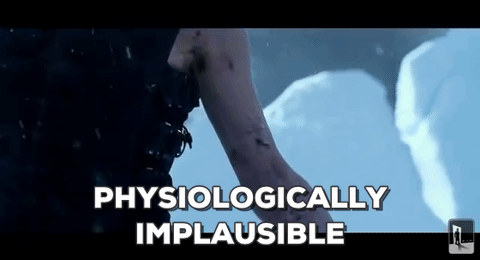At last, we have come to this, the most recent available production in the Resident Evil franchise. Mr Paul W.S. Anderson returns to write and direct, and Ms. Milla Jovovich appears in the lead role, alongside many returning faces from times past. The 96-minute entertainment was seen in cinemas in 2012, and will hold its 39-month streak as last Resident Evil film until January 2017, when the final chapter appears.
I wish I could speak of this ending with the regret which is the appropriate accompaniment to all endings, but sadly, this is beyond me. Resident Evil: Retribution is sadly lacking in sparks of interest for either the meat processing professional or the keen amateur.
The story begins with the capture of Ms. Jovovich, and her clone’s memory-modified immersion in a simulated environment. One may note that the memory modification and implantation mastery shown by the Umbrella Corporation seem unlikely, given the complete failures of both their biological weapons and experimental design unit. Perhaps this is an instructive lesson for my readers; the corporation might have happily sold their services as a brainwashing facility, avoiding so much unpleasantness for both the participants and the unfortunate audience of these films.

It is revealed that Ms. Jovovich is inside an underwater laboratory, if one can call any place that operates with such scant concern for basic biosafety a laboratory. Certainly, a large proportion of the Umbrella Corporation budget seems to have been spent on simulated weather, and rather less on introductory courses to controlled experiments.
The place is riddled with former allies, most of them hostile. There is even a return of our friend in Tokyo with the unsuitable footwear. And, of course, there is a full cast of disposable security guards and the like. This is a realistic depiction of life’s fragility, yet it is never satisfactorily explained what these people are doing here, or indeed, given that the plot hinges on a human population that is close to extinction, why characters driven by this fact are happy with such a large amount of collateral damage.

Given that so much of this production takes place in a simulated environment, one feels that there is a potential explanation for everything that happens–who knows what, exactly, the Umbrella Corporation was trying to achieve? The clones, the unlimited ammunition, the return of the inexplicably threatening large, unwieldy man with a custom tooled weapon; all perfectly rational, if you assume the Umbrella designers were as asinine as their counterparts in scientific ethics. It is somewhat freeing to see all of this without a reference to reality. It has been explained to me that a philosopher has suggested that something similar may be true of our own world–I cannot feel qualified to comment on this.
As we all know, such pleasures cannot last, and we soon return to what is laughably, in these productions, dubbed the “real world.” A fight in arctic conditions makes a mockery of thermodynamics, as climatic conditions that appear similar to those that would freeze exposed skin have no effect on characters wearing body suits and cocktail dresses. But this is the least of the indignities the truth is forced to endure. The greatest is probably the sight of a self-administered parasitic infection granting its host the ability to both propel and expel bullets through her body–even if we grant that, conceivably, an infection could do such a thing, there is surely no time for the relevant musculature and ligaments to develop within the young lady’s fingers.

We end at the seat of the federal government of the United States, which has apparently become something of a refuge for the surviving humans. Apparently, the final film will deal with some form of last stand, alongside a return (sad to say) of Ms. Jovovich’s magical powers. While such a recurrence is unpromising, it is pleasant to see that three women have survived to lead this stand, alongside two men. Females slightly outnumber males in the US, so this is a demographically pleasing mix, in that aspect, at least. Perhaps one might entertain the hope that a final production can, produce that accuracy in both depictions of meat consumption and the presentation of reality that has been, until now, so sorely missing. As this film finishes, one finds it impossible not to stare towards the future with equal dreams.

***
Afterword: The meat processing professional previously had the great honor of writing for The Toast. They are nothing if not a completionist, so despite the sad loss of that publication, they are grateful for the chance to continue their Resident Evil reviews at The Mary Sue. Previous installments can be found here.
Want more stories like this? Become a subscriber and support the site!
Helen Craig lives in the UK, where she works in science engagement and wastes too much time online. She has a degree in the history of science and tweets @helenfcraig.
—The Mary Sue has a strict comment policy that forbids, but is not limited to, personal insults toward anyone, hate speech, and trolling.—
Follow The Mary Sue on Twitter, Facebook, Tumblr, Pinterest, & Google+.









Published: Oct 24, 2016 10:44 am